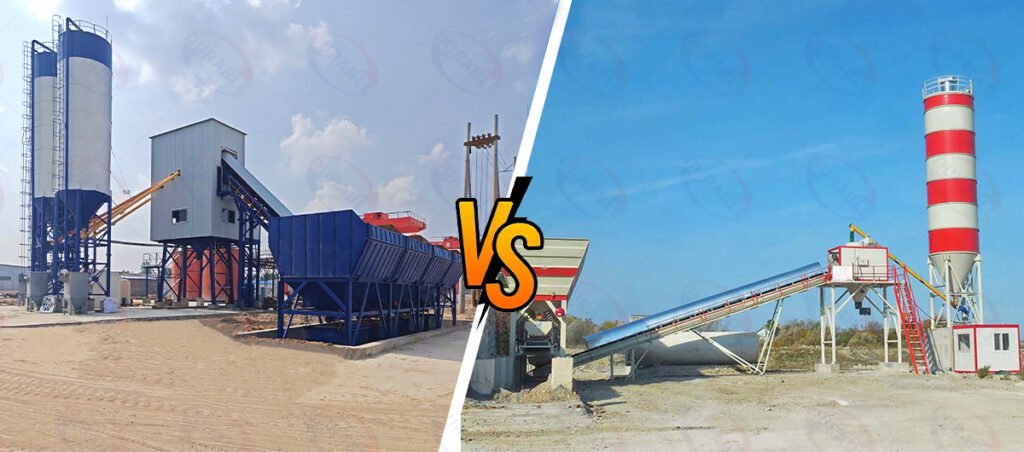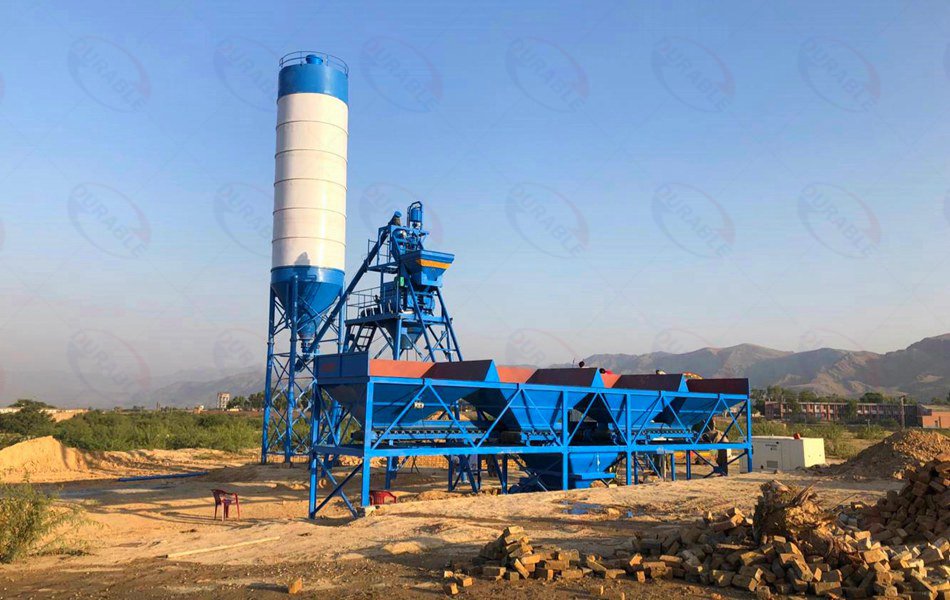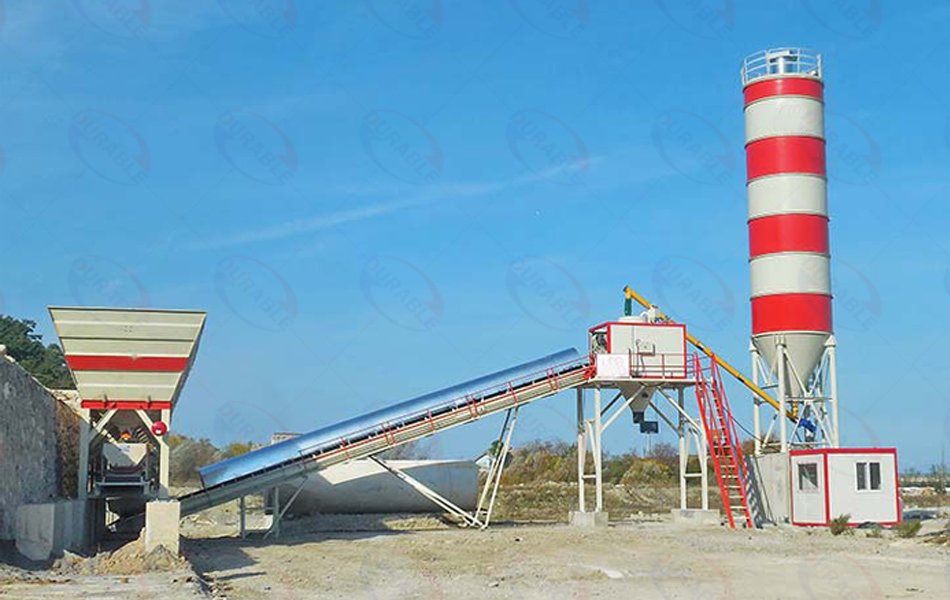RMC Plant Efficiency: Dry Mix vs. Wet Mix Compared
Selecting the right concrete batching plant is one of the most significant decisions your business will make. The choice between a dry mix batching plant and a wet mix batching plant will define your initial investment, operational efficiency, product quality, and even the geographic area you can serve. Get it right, and your business is set up for success. Get it wrong, and you could face doubled costs and operational headaches. The core difference is simple: a wet mix plant produces fully mixed concrete before loading it into a truck, while a dry mix plant loads raw ingredients for mixing inside the truck during transit. At Durable, I’ve helped set up both types of plants across the globe, and I can tell you it’s not about which is better, but which is right for your specific market. This guide will provide a direct comparison to help you make the most profitable choice.

Table of Contents
- What Is the Essential Process Difference?
- Which Plant Produces Higher Quality Concrete?
- Which Plant Has a Lower Initial Investment Cost?
- What About Long-Term Operating Costs?
- Which Plant Is Better for Long Distances?
- How Do They Compare on Production Speed?
- Final Decision Checklist: Which Plant Is Right for You?
- Common Questions About Batching Plant Types
What Is the Essential Process Difference?
A wet mix plant uses a central mixer to produce finished concrete at the plant, while a dry mix plant dispenses raw materials into a truck where mixing occurs during transit.
The primary distinction between these two types of RMC plant is the location of the mixing process. A wet mix batching plant, also called a central mix plant, integrates all ingredients at the plant site. Aggregates, cement, water, and admixtures are all fed into a large, stationary central mixer. Inside this mixer, the components are blended into a homogenous, finished concrete product. This ready-to-use concrete is then discharged into a truck mixer. The truck’s role is simply to transport the concrete while agitating it to prevent segregation. Conversely, a dry mix batching plant, also known as a transit mix plant, functions as a proportioning and loading system. It weighs the dry ingredients (sand, stone, cement) and discharges them into the mixer truck’s drum. Water is weighed separately and loaded into the truck’s onboard water tank. The mixing process is initiated by the driver, usually during the journey to the job site. In this system, the truck mixer performs the function of the mixer.
Which Plant Produces Higher Quality Concrete?
A wet mix batching plant produces concrete of a higher and more consistent quality due to its controlled, centralized mixing process.

For applications requiring strict concrete quality control, the wet mix plant is the superior choice. The entire mixing process is automated and managed by the plant’s control system. Every batch of concrete is mixed for a precise, predetermined duration in a highly efficient stationary mixer. This ensures that the water-to-cement ratio is exact and that all ingredients are thoroughly blended, resulting in a homogenous product with consistent strength and workability. This level of consistency is critical for high-specification projects such as infrastructure, high-rise buildings, and dams. The concrete quality from a dry mix batching plant is subject to more variability. The final quality is dependent on external factors, including the mixing time in transit, the condition of the truck’s drum and mixing fins, and the diligence of the driver in adding the correct amount of water. These variables can introduce inconsistencies between batches.
Which Plant Has a Lower Initial Investment Cost?
A dry mix batching plant offers a lower initial investment cost primarily because it does not include a large central mixing unit.

When evaluating the batching plant investment cost, the dry mix plant presents a more economical entry point. The main cost-saving factor is the absence of a large, heavy-duty central mixer. A central mixer, along with its powerful motor, gearbox, and the robust support structure it requires, represents a substantial portion of a plant’s total cost. By eliminating this component, the initial capital outlay for a dry mix plant can be significantly lower than for a wet mix plant of similar capacity. The civil works and foundation requirements may also be less extensive and costly. This lower barrier to entry makes the dry mix batching plant an attractive option for startups, small-scale producers, or businesses expanding into new markets with limited initial capital.
What About Long-Term Operating Costs?
Long-term operating costs present a trade-off: dry mix plants incur higher fleet maintenance costs, while wet mix plants have higher plant-based maintenance and energy expenses.
A clear-cut answer for lower long-term cost does not exist; it depends on the operational focus. A dry mix batching plant increases the operational strain on the truck mixer fleet. The truck’s drum, engine, and hydraulic system perform the energy-intensive task of mixing raw materials, which leads to accelerated wear and tear and higher lifetime maintenance costs for the vehicles. In a wet mix batching plant, this mechanical stress is concentrated on the central mixer. This results in regular plant-based maintenance, including the scheduled replacement of high-wear parts like paddles and liners, which requires plant downtime. Additionally, the powerful motors of a central mixer consume more electricity, leading to higher utility costs. However, the efficient mixing action of a central mixer can sometimes achieve specified concrete strength with a slightly lower cement content, offering a potential for material cost savings over the plant’s lifetime.
Which Plant Is Better for Long Distances?
The dry mix batching plant is superior for operations that require transporting concrete over long distances.
The key operational advantage of the dry mix system is its suitability for extended concrete transport distance. The chemical hardening process of concrete, known as hydration, begins as soon as water is mixed with cement. For a wet mix batching plant, this process starts at the plant, creating a limited window of time—typically 60 to 90 minutes—to transport and discharge the concrete before it begins to set. This time constraint restricts the plant’s effective service radius and creates risk from unforeseen traffic delays. With a dry mix batching plant, the hydration process is delayed until the truck is near the destination. The driver adds the water to the drum during the final phase of transit. This capability allows a dry mix plant to serve job sites located much farther away, making it the practical choice for businesses operating in large, sparsely populated regions or supplying to remote construction sites.
How Do They Compare on Production Speed?
A wet mix batching plant offers significantly higher production speed and hourly output, making it ideal for high-volume operations.
Regarding batching plant productivity, the wet mix plant has a distinct advantage. Its centralized, high-efficiency mixer can produce a full batch of concrete in a very short cycle, often just 60 to 90 seconds. The plant’s systems are designed for concurrent operations; while one completed batch is being discharged into a truck, the next batch of materials is already being weighed. This rapid, overlapping process allows for a continuous and high-volume flow of concrete, enabling the plant to service a large number of trucks per hour. This is essential for supplying major construction projects or for operating competitively in a busy urban market. A dry mix plant has a slower production cycle. Each truck must be positioned sequentially under the aggregate and cement dispensers to be loaded. This linear process takes more time per truck, resulting in a lower overall hourly output compared to a wet mix plant of the same rated capacity. Our mobile concrete batching plant options often utilize wet mixers to achieve this rapid on-site production.
Final Decision Checklist: Which Plant Is Right for You?
Use this table to evaluate your business requirements and determine the most suitable concrete batching plant type for your operational context.
The process of selecting a concrete batching plant should be driven by a strategic assessment of your business model. This checklist provides a direct framework for the dry mix vs. wet mix decision by focusing on four critical business factors.
| Your Business Factor | Choose a Dry Mix Plant If… | Choose a Wet Mix Plant If… |
|---|---|---|
| Primary Market | You serve a large, rural, or sparsely populated area. | You serve a dense urban or suburban market with heavy traffic. |
| Typical Customers | Your main clients are residential or small commercial builders. | You target high-spec projects like airports, dams, or government contracts. |
| Initial Budget | Your capital is limited, and you need a lower barrier to entry. | You have the capital to invest in high-efficiency, high-quality production. |
| Top Priority | Your top priority is maximizing your delivery range and flexibility. | Your top priority is producing the highest quality concrete and maximizing output. |
Common Questions About Batching Plant Types
Question 1: Can a dry mix plant produce high-strength concrete?
Yes, a dry mix plant is capable of producing high-strength concrete. However, it demands rigorous process control, including accurate water addition by the driver and ensuring the truck’s mixing drum is in excellent condition. Achieving consistent high-strength results is generally more challenging than with a wet mix plant.
Question 2: What is a “central mix” plant?
A “central mix” plant is the industry term for a wet mix batching plant. The name emphasizes the key feature of the plant: the concrete is mixed completely at a central location (the plant) before being transported.
Question 3: Does a wet mix plant use more energy?
Yes, a wet mix plant typically has a higher energy consumption than a dry mix plant of the same capacity. This is primarily because of the large, powerful electric motor required to operate the central mixer, which is the most energy-intensive component of the system.
Question 4: What happens if a wet mix truck gets stuck in traffic?
If a truck from a wet mix plant gets stuck in traffic for too long, there is a serious risk that the concrete will begin to harden inside the drum. This can render the entire load unusable and, in worst-case scenarios, can cause severe damage to the truck mixer, requiring costly repairs.
Question 5: Are mobile batching plants typically wet or dry mix?
Mobile batching plants can be either wet or dry mix, but many are designed as wet mix plants. A mobile wet mix plant provides the advantage of producing high-quality, consistent concrete directly on a large job site, eliminating transport time issues and ensuring a fresh supply for critical pours.
 Durable Machinery
Durable Machinery